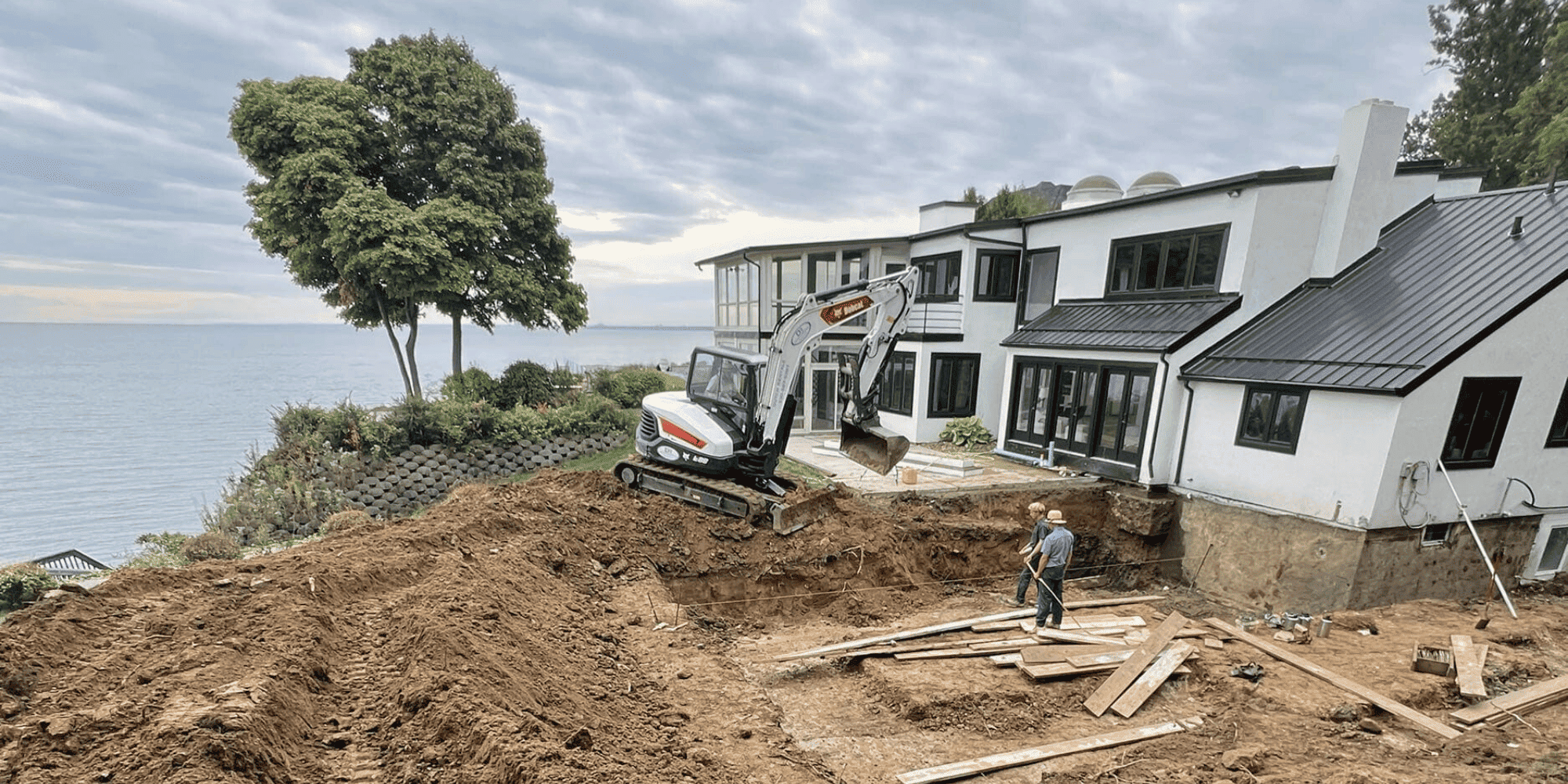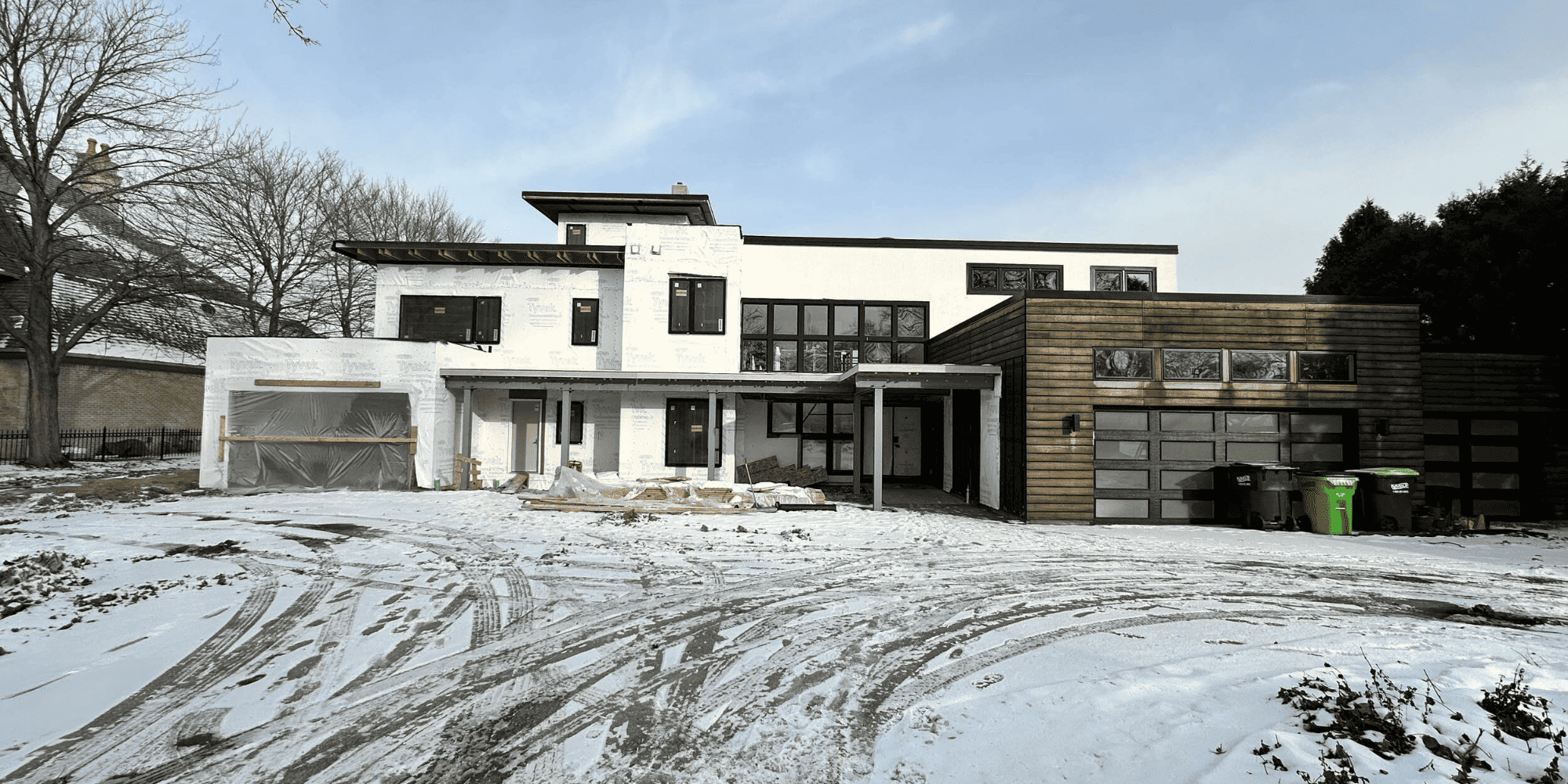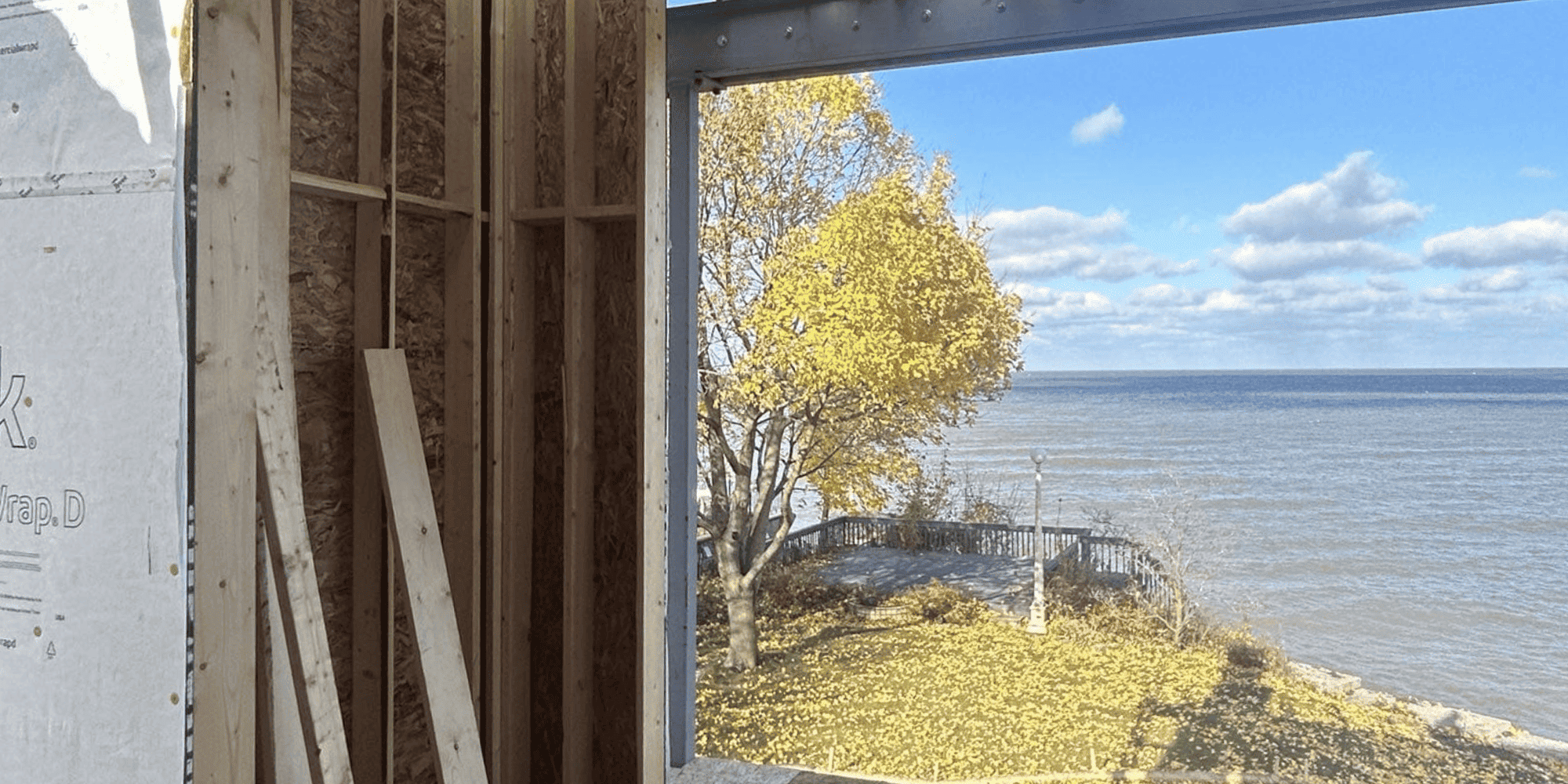6 Architectural Innovations for Lakeside and Waterfront Homes
Designing a waterfront home is about making smart, long-term decisions that protect your investment and ease your mind.
From modern architectural design to tried-and-true coastal construction techniques, the approach you take can dramatically impact your home’s durability and comfort.
The good news? Today’s resilient architecture options offer more flexibility, safety, and longevity than ever before.
Why Architecture Matters Near the Water
Yes, designing a home near the water is about capturing those stunning views. But it’s also about staying one step ahead of the elements.
Lakeside living comes with its own set of challenges, including shifting soil, heavy winds, fluctuating water levels, and persistent moisture. That’s where thoughtful architectural design makes all the difference.
When your home is built with strategy and intention, it doesn’t just handle those conditions—it thrives.
From the foundation to the roofline, every choice should help protect your home, preserve its beauty, and make lakeside living feel easy year after year.

Smart Building Strategies for Lakeside Homes
The best lakeside homes are more than just beautiful. They’re built to handle the elements without skipping a beat.
These architectural strategies are designed to boost long-term durability, increase energy efficiency, and give you peace of mind no matter what the forecast looks like.
1. Elevated Foundations for Long-Term Protection
Building a lakeside home means embracing everything that comes with the shoreline, including rising water, saturated soil, and unpredictable weather.
Elevated foundations are one of the most important architectural choices you can make to safeguard your home against the elements. By raising your home above potential flood zones and moisture-laden ground, you’re not just protecting your investment—you’re building smarter from the start.
Piers
Concrete or masonry piers lift your home off the ground using a series of strategically placed columns. This allows water to move around and underneath the structure during heavy rains or snowmelt.
They're great for sloped properties, and they help prevent long-term damage from standing water, which can wreak havoc on traditional foundations.
Stilts
Stilts—usually made from treated wood, concrete, or steel—elevate the entire home several feet off the ground, creating an open-air space underneath. Not only does this reduce flood risk, but it also improves air circulation, which helps prevent mold, mildew, and wood rot.
Plus, the open area below can be creatively used for storage, parking, or even a shaded patio.
Raised Concrete Slabs
A raised concrete slab combines the durability of poured concrete with an elevated profile that offers better protection than a traditional slab-on-grade. It’s a great option for gently sloping lots or areas with moderate flood risk.
Reinforced with steel and often built over compacted gravel or piers, these slabs provide a solid, low-maintenance base that stands up to water intrusion and shifting soil.

2. Smarter Drainage Planning
When you live by the lake, rain doesn’t just roll off the roof and disappear. Without intentional planning, all that water can pool around your foundation, erode your landscaping, and slowly undermine the integrity of your home.
Smart drainage design ensures your property can handle whatever the forecast throws at it without constant patchwork fixes.
French Drains
These below-grade drainage systems use perforated pipes surrounded by gravel to redirect water away from your home. Think of them as your property’s built-in exit strategy for runoff. They’re discreet, low-maintenance, and extremely effective, especially when installed early in the design-build process.
Swales
Swales are shallow, landscaped channels that guide water to a designated drainage area. Your architect can design swales to feel like natural landscape features, blending seamlessly into the property while keeping water moving in the right direction.
Permeable Pavers
Instead of traditional concrete or asphalt that sends water racing toward your foundation, permeable pavers allow rain to filter directly through into the soil below. They reduce runoff, minimize erosion, and come in a wide range of styles to match the look of your home.
Bonus: They’re easier on the environment and perfect for driveways, walkways, and patios.
3. Storm-Resistant Structural Design
Mother Nature has a mind of her own, especially near the water. Wind gusts, heavy rains, and storm surges can test the limits of any home. That’s why storm-resistant design isn’t just smart, it’s essential.
Integrating resilient construction techniques from the start ensures your home is ready for whatever the weather dishes out.
Reinforced Framing
Using stronger, hurricane-rated materials like impact-resistant sheathing, engineered wood, and metal connectors adds serious muscle to your home’s bones. Reinforced framing helps your house stand up to wind pressure and keeps everything intact during extreme conditions.
It’s invisible to the eye, but invaluable when the wind starts to howl.
Hurricane Ties & Structural Connectors
These metal connectors hold together critical junctions in your framing—roof-to-wall, wall-to-floor, and so on. They help distribute wind forces throughout the structure, reducing the likelihood of failure at any single point. It’s one of those behind-the-scenes upgrades that makes a massive difference.
Wind-Resistant Shutters & Window Design
High-wind zones near large bodies of water call for fortified windows and optional exterior shutters. Hurricane shutters and impact-rated glass are the first line of defense, protecting your home from flying debris and pressure changes.
And don’t worry—they’re available in styles that blend beautifully with your home’s overall look.

4. Built-In Ventilation & Moisture Control
Living lakeside means your home is surrounded by moisture-rich air year-round. That can quickly lead to mold, wood rot, and an uncomfortable living environment—especially if the building wasn’t designed with ventilation in mind. That’s where smart, integrated systems come into play.
Crawl Space & Attic Ventilation
These tucked-away areas tend to trap moisture, which can wreak havoc if not properly managed. Mechanical vents, vapor barriers, and dehumidifiers in crawl spaces help prevent long-term structural issues.
In attics, ridge vents and soffit vents keep air circulating, reducing humidity and protecting your insulation from condensation damage.
Whole-Home Dehumidification
Beyond isolated problem spots, a whole-house dehumidifier can regulate your indoor air quality throughout the year. It’s quieter, more efficient, and more effective than portable units.
When installed during the design-build process, it works seamlessly with your HVAC system.
Smart Exhaust Systems
High-performance kitchen hoods, bathroom fans, and laundry exhaust systems remove excess moisture exactly where it builds up. When properly planned, these systems will protect your finishes and make your home feel noticeably fresher, cleaner, and more comfortable to live in.
5. Landscape Architecture for Shoreline Stability
A well-designed landscape plan near the lake goes far beyond curb appeal. It’s about protecting your shoreline from erosion, stabilizing the soil around your foundation, and helping stormwater soak into the ground rather than pooling up near your house.
Native plantings with deep root systems help keep everything in place—even during storms. Grasses, shrubs, and trees selected for your specific soil and water conditions can reduce runoff and support local ecosystems, all while looking completely natural.
Layered plant beds, strategic mulch zones, and gentle grading combine beauty with long-term function.
Your architect and landscape designer should collaborate to ensure the outdoor environment is working with your home, not against it.
With the right plan, you’ll have fewer erosion issues, less standing water, and a yard that looks like it’s always belonged there.

6. Dock and Seawall Integration
When you’re building along the lake, your shoreline is an extension of your lifestyle. Whether you’re pulling up in a pontoon, launching kayaks, or just watching the sun set over the water, your dock needs to match your daily rhythm and the ever-changing lake levels.
Floating Docks
These docks rise and fall with the water, making them ideal for lakes with fluctuating levels or active boating. They’re anchored with flexible connections and supported by durable floatation drums or air chambers.
Floating docks are easier to remove or reconfigure seasonally and can feel more approachable and casual, making them perfect for laid-back entertaining or quick dips in the water.
Permanent Pilings
For a more architectural, long-lasting solution, permanent docks supported by pilings are a better fit.
They’re especially useful in deeper or more stable water, where year-round access and a strong visual statement are important. Pilings made from treated wood, composite, or concrete offer a more integrated, permanent feel and can be designed to echo the home’s architectural style right down to the railing detail.
And don’t forget the seawall. No matter if it’s stone, concrete, or steel, a well-designed seawall protects your shoreline, reinforces property value, and can even be used to shape paths, terraces, or seating areas right at the water’s edge.
With the right team, your dock and seawall will be functional and feel like part of your architecture.
From Plans to Pilings—We’re Here to Help
Living lakeside should be as peaceful as it looks, and with the right architectural practices in place, it can be.
Elevated foundations, smarter drainage, built-in ventilation, and shoreline-stabilizing landscaping are just a few of the tools today’s architects have to work with. And the difference they make is huge.
But these aren’t one-size-fits-all solutions. Your home deserves a plan designed around your property, your lifestyle, and your goals. If you're ready to bring it all together, let’s talk about how Payne & Tompkins can help you build a lakeside retreat that stands the test of time. Get in touch with us to schedule a quick consultation.
.jpg)

